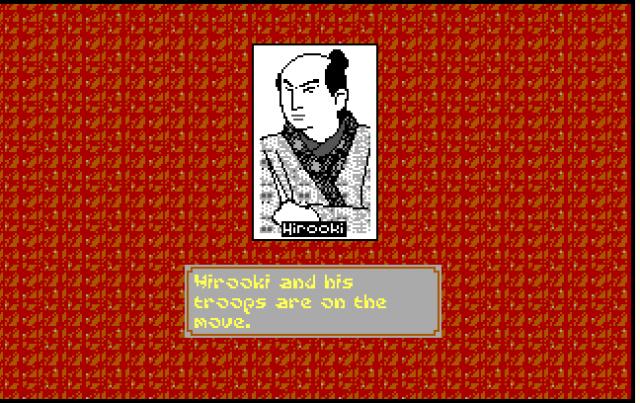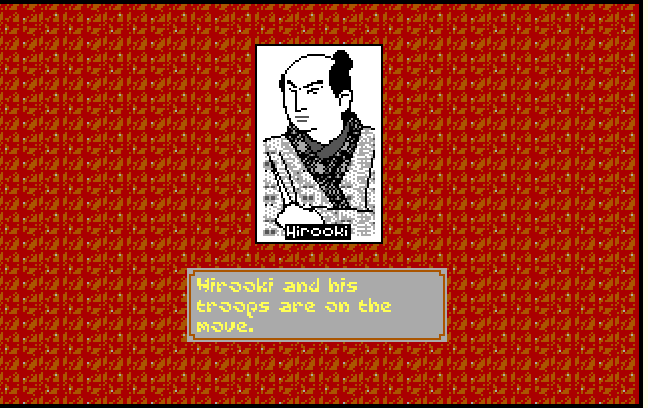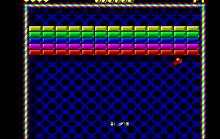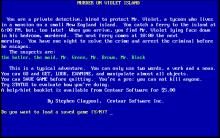Sword of the Samurai
Press Keyboard right side: Alt+Enter keys to switch to full screen game play, and Alt+Enter keys to return.
How to play Sword of the Samurai
Whether you're playing the original DOS version or a modern digital release, mastering the controls will dramatically improve your gameplay.
Default Controls:
- Movement: Use W, A, S, D or Arrow Keys
- Jump: Spacebar
- Interact: E
- Shoot (after upgrade): X or Left Mouse Button
- Melee Attack: C or Right Mouse Button
- Power Attack (after upgrade): V
- Dodge (after upgrade): Shift
Sword-Specific Commands:
- Draw/Sheathe Sword: 5
- Shake Sword: 7
- Swing Sword (Duels):
- 4 or Left Arrow – Swing Left
- 6 or Right Arrow – Swing Right
- 8 or Up Arrow – Overhead Swing
- Enter – Hold to Charge Swing
- 4 or Left Arrow – Swing Left
Sword of the Samurai Description
Sword of the Samurai is a genre-defying strategy-action hybrid released in 1989 for MS-DOS by MicroProse. Set during Japan’s Sengoku Jidai, or Warring States period, the game lets players experience life as a low-ranking samurai rising through the ranks to become Shogun. Blending role-playing, political simulation, and sword-fighting, it was groundbreaking for its time—and remains influential today.
Behind the Scenes: Development and Legacy
This title was designed by Lawrence Schick, with notable contributions from Jeff Briggs and Sandy Petersen, both respected for their work on genre-defining strategy games.

In 2014, Sword of the Samurai was re-released digitally on GOG.com and Steam, preserving its unique gameplay and making it accessible to a modern audience. Its influence is still felt in contemporary titles that blend combat and strategic decision-making.
Gameplay Overview: Three Core Modes
Role-Playing and Strategy
Players begin their journey managing a small fief, building honor, and seeking political favor. You must attend court, recruit loyal samurai, and gradually expand your influence. The path to leadership is shaped by decisions—honorable or otherwise.
Dueling and Melee Combat
The combat system places you in intense one-on-one sword duels or group fights. Each battle demands precision, timing, and mastery of directional attacks.
Warfare and Conquest
As you grow in power, you’ll command armies in strategic battles across Japan’s provinces. Victory in war not only expands territory but also strengthens your claim to the Shogunate.
A World of Intrigue and Consequences
Sword of the Samurai allows for morally complex decisions. You can attempt to kidnap rivals, stage assassinations, or manipulate the political landscape—but dishonor comes at a high cost. These mechanics add depth, pushing players to balance ambition with integrity.
Comparisons to Modern Games
While few titles offer the same strategic-samurai hybrid, several modern games echo parts of its experience:

- Total War: Shogun 2 mirrors the military and strategic layers of conquest.
- Nioh and Ghost of Tsushima deliver the intense swordplay but lack the deep political simulation.
These games reflect the lasting impact of Sword of the Samurai, even if they focus on different aspects of samurai life.
Why Sword of the Samurai Still Matters
Sword of the Samurai was a pioneer. It offered one of the earliest examples of sandbox storytelling fused with gameplay that demanded both strategy and reflexes. For fans of historical games, samurai culture, or innovative design, this title is more than nostalgia—it’s essential gaming history.
Now that it's playable on modern platforms, there’s never been a better time to rediscover it.
Cheats/Hints/Walkthroughs for Sword of the Samurai
- Balance Honor and Ambition: Dishonorable acts may bring fast gains but can destroy your reputation or provoke revenge.
- Recruit Strategically: Your allies matter. Choose loyal samurai with strong stats to increase success in war and duels.
- Save Often: Combat and politics are unpredictable. Use frequent saves to navigate risk-heavy decisions.

Sword of the Samurai - additional information
















